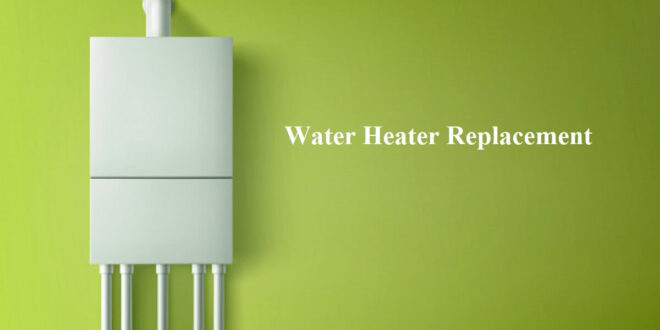Are you experiencing leakages in your water heater? If yes, there is a need for a water heater replacement. This article will guide you step by step on how to install or replace your water tank in less than a day. You may not require a tank currently, but chances are you will need one in the coming few years.
Water heater replacement is never a challenging task if you are equipped with the right basic and have a little experience dealing with copper.
Tools Needed
- Adjustable Wrench
- 4-in-1 Screwdriver
- Electrical Tape
- Pipe Wrench
- Safety Glasses
- Plumbers Tape
- Tape Measure
- Soldering Torch
- Tube Cutter
When Do You Need a Water Heater Replacement?
Water heater replacement is crucial immediately you realize a leakage in your tank. The common sign that you need to replace your water heater is when you observe a drip underneath your tank, mostly appearing as a track of rusty water.
In this case, the steel tank is extremely rusty and can’t be repaired, and the only solution is replacing the water heater.
Replace the water heater right away after spotting a drip.
The new water heaters available in the market today come with a lot of warning and installation instructions to ensure you handle the electrical, gas, and some other connections securely.
In our article, we will focus on those basic steps which are adviced by recognized plumbers around the world.
Below Ways on How to Replace Your Water Heater

1. Turn Off the Gas and Water
Shut off the gas connected to your water heater by ensuring the turnoff valve is at the quarter turn. To ensure the gas is off, the handle should be at the right angle of the pipe.
For an electric water heater, shut off your water heater’s circuit breaker at the home electricity breaker box.
2. Drain the Water Heater Tank
Attach a hosepipe to your water heater drain valve found underneath the water heater. To prevent slowness in drainage, open the closest hot water valve, like in your bathroom.
The other end of your hose pipe should be run outdoors or placed over a floor drain. When opening the drain valve, be slow to prevent the sediments from clogging the drain valve.
Ensure your tank drains completely, and then you can turn off your drain valve and get rid of the hose pipe.
3. Disconnect the Water Lines
Remove the cold and hot water supply lines from your water heater by use of channel-lock suppliers or a pipe wrench. They are connected to your water heater with pliable tubes (mostly linked with a union or compression fittings)
4. Disconnect the Gas or Electrical Lines
You need to disconnect the water heater power source.
Electric water heater: disconnect the wire cover connection panel found above your water heater. Confirm to ensure the circuit has been removed successfully, using a tester to check each wire; you can then remove those wire connectors attached to your water heater leads. Unscrew those cable clamps and then disconnect that cable from your connection box
Gas water heater: ensure the valve found on the primary gas line is off, and then you can remove the line from the valve controlling the gas on your water heater. The gas tube may be a pliable tube coated with bare soft-copper tubing and vinyl.
5. Disconnect the Water Heater Vent
At the top of your water heater, remove the vent pipe from your draft hood.
The vent pipe is always attached to the draft pipe with four or five sheet metals. In case your draft hood is not that badly damaged, you can reuse it when you install the new water heater.
6. Change the New Water With the New One
By use of an appliance dolly, remove the old water heater and place the new one. If you need to move your water heater from one place to another, it is important to have a helper who will help with this work. Ensure you strap your water tank well to the dolly before moving it.
Clean up where you had placed the older water heater; place the new water heater in the right position.
Verdict
For wiring, the new water heater, follow the manufacturer’s instructions. Before you begin the water heater replacement, always enquire with your local inspector for a permit. After you have finished the replacement, call the local inspector to have a look.
 Make Home Smart Let's Make Smart Home for Everyone!
Make Home Smart Let's Make Smart Home for Everyone!






